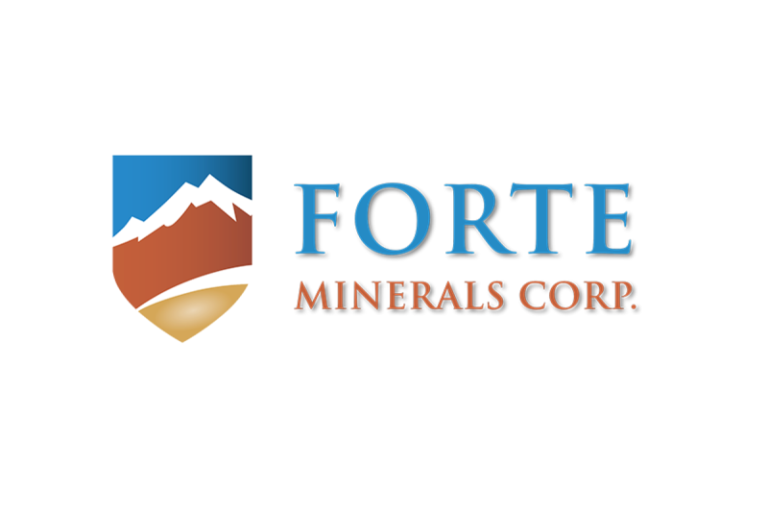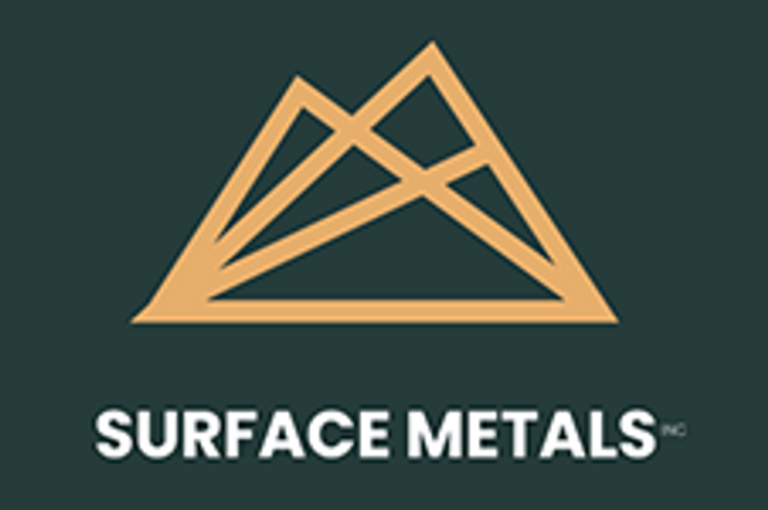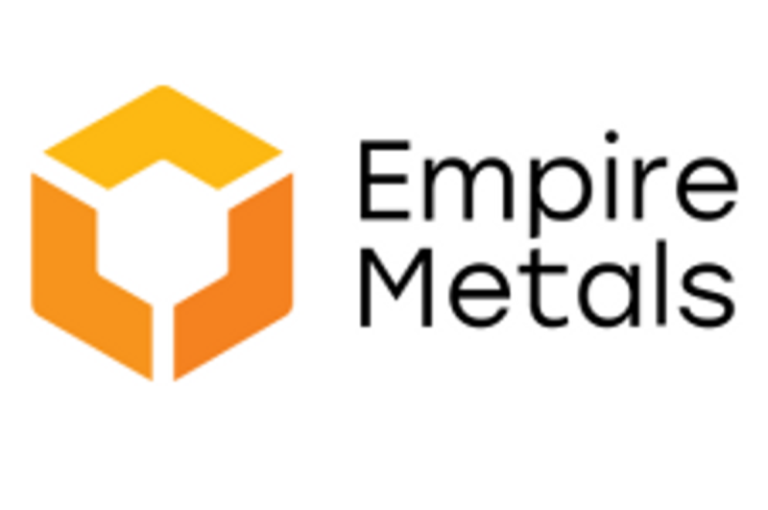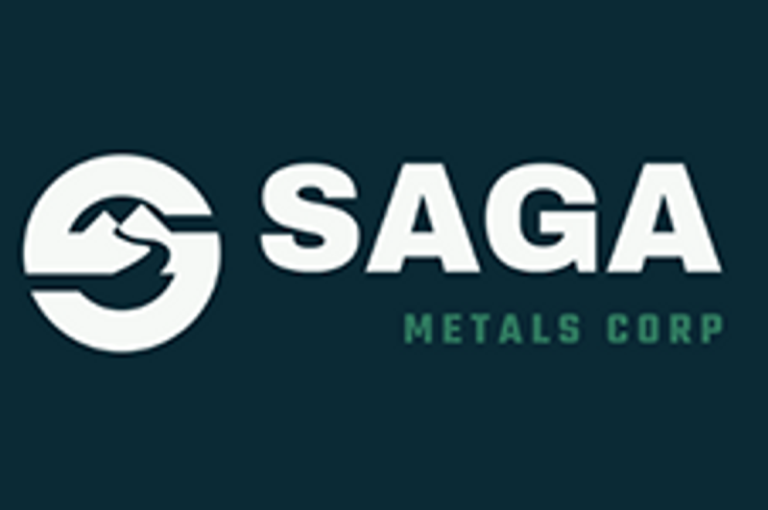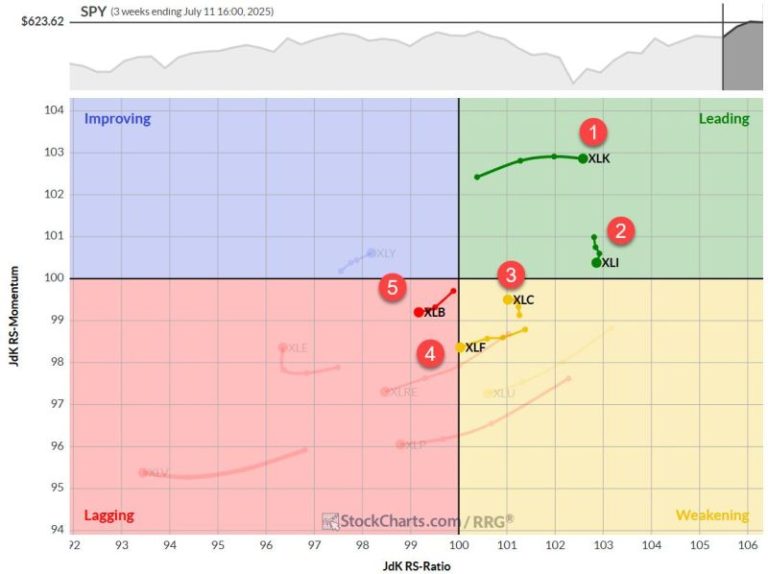Saga Metals Corp. (‘SAGA’ or the ‘Company’) (TSXV: SAGA,OTC:SAGMF) (OTCQB: SAGMF) (FSE: 20H) a North American exploration company focused on critical mineral discovery, is pleased to report a significant breakthrough in its 2025 exploration campaign at the wholly-owned Radar Project in Labrador, Canada. Emerging technical results suggest that the project bears geological similarities to Panzhihua, the world’s leading vanadiferous titanomagnetite (VTM) operation, located in China, which contributes over 40% of global vanadium (V 2 O 5 ) production 1 .
With a large oxide layering thickness, a near-monomineralic VTM composition, and extensive mineral tenures, the Radar Project shows the potential to become a globally meaningful VTM project. We use Panzhihua as our deposit model target, however, note that comparable Labradorite-type AMCG deposits are not necessarily indicative of the grades and tonnes of the mineralization within the Dykes River intrusion.
‘The Radar Project’s mineralogy appears cleaner and more coarse-grained than most VTM deposits, and its vanadium content is similar to Panzhihua. This is a rare combination,’ said Paul McGuigan, P. Geo.
The Company requested that Paul McGuigan, P. Geo., review the results of the 2024-25 drilling program, which comprised 2,209 m of drilling, core logging, and 2,943 assay samples from the Hawkeye zone of the Radar Project. Additionally, the Company engaged Allan R. Miller, PhD, P. Geo., to investigate the petrography and ore microscopy of a preliminary suite of specimens, primarily from the Hawkeye zone.
Metallurgical testing is pending. Meanwhile, sufficient core logging, assaying, and petrography have been completed to identify a highly prospective Lower Cumulate Layer with a 100-200 m thick vanadium-rich basal layer within the drilled 600 m thick layered gabbronorite suite.
Radar Ti-V-Fe Project: A Rare Geological Setting
Located just 10 km from Cartwright, Labrador, the 24,175-hectare Radar Property is supported by existing infrastructure including road access, a deep-water port, airstrip, and nearby hydroelectric power. The property completely encompasses the Dykes River Intrusive Complex, a previously underexplored layered mafic body.
The Dykes River intrusion is an early, pre-collisional part of the Grenville Province. The Grenville, and its equivalent in Norway, is globally recognized for hosting some of the largest titanium–vanadium–iron oxide-bearing anorthosite massifs, including Lac Tio in Quebec and Tellnes in Norway 2 . This province has long been recognized as a powerhouse for strategic critical minerals, particularly Ti, V, Fe, and P 3 .
Figure 1: Radar Property map, depicting aeromagnetic anomalies, oxide layering and the site of the 2025 drill program. The Property is well serviced by road access and is conveniently located near the town of Cartwright, Labrador. A compilation of historical aeromagnetic anomalies is shown. SAGA has demonstrated the reliability of the regional airborne magnetic surveys after ground-truthing and drilling in the 2024 and 2025 field programs.
Radar’s Lower Cumulate Layer is similar to Panzhihua’s Main VTM Zones
Using the data from 2,943 assay samples, plots of TiO 2 vs. Fe/Ti (like those used by Charlier on other Grenville intrusions) tracked the evolution of the parent magmas of the Dykes River Fe–Ti–V oxide system. Similarities in ratios of TiO 2 and V 2 O 5 vs Fe 3 O 4 across multiple drill holes serve to identify the stratiform oxide ore layers. Within the 600 m tested thickness of layered gabbronorite, the chemistry delineates a very promising 300-400 m thickness, called the Lower Cumulate Layer. The highest V 2 O 5 assays are located in the lower 100-200 m, coinciding with the highest-grade intervals of VTMs. The layer is comprised of interlayered gabbronorite and bands of semi-massive to massive VTM.
Drill holes R25-HEZ-01, -07, -04, and -05 intersect this Lower Cumulate Layer. The chemistry indicates that the layer was deposited from a single, large-volume pulse of Ti-V-Fe-enriched magma (as shown in the consistency in the graphs plotted in Figure 2 below).
‘The remarkable aspect is that 80% of the samples are of the same species of VTM, which is quite rare and due to the simple mineralogy,’ stated Paul McGuigan, P.Geo.
SAGA’s Technical Consultant, Paul McGuigan, P.Geo., further identified that the lower 200–400 m of Hawkeye’s mafic sequence comprises high-grade, rhythmically-layered VTM, with consistent TiO 2 , Fe 3 O 4 and V 2 O 5 ratios. Like Panzhihua 4 , the best grades at Hawkeye occur where individual VTM layers coalesce in the lower layers of a labradorite-AMCG type intrusion.
- Host Rock : Gabbronorite with layered massive and disseminated titanomagnetite
- Mineralogy : Coarse-grained titanomagnetite is pronounced in the massive cumulate VTM
- Oxide Textures : Immiscible magnetite–ilmenite indicating primary magmatic segregation
- Stratigraphy : Cumulate layering dipping inward, similar to a lopolith intrusion
Figure 2: TiO 2 vs Fe/Ti for Lower Cumulate Layer showing similar magmatic differentiation trends.
The Lower Cumulate Layer at Radar, drilled in Holes R25-HEZ-01, -04, -05, and -07, features:
Table 1: Lower Cumulate Layer highlighting the length of VTM intersections.
At the heart of SAGA’s breakthrough is the Hawkeye Zone, part of the Dykes River Complex. Recent petrographic work by Dr. Allan R. Miller confirms the presence of semi-massive to massive titanomagnetite hosted in gabbronorite cumulate layers. The mineralogy and assays in the lower Hawkeye zone are strikingly similar to those at Panzhihua 5 , where multiple layers of VTM mineralization—ranging from 1 to 30 meters in thickness and aggregating up to 100 m thick—are extracted for pig iron and vanadium.
Drilling Confirms High-Grade Intervals Across Large Stratigraphy
To summarize the 2,209 m drill program results, assays were grouped with core logging and a calculated VTM content to conform to the interpreted magmatic layering, as follows:
- Semi-massive to massive VTM (> 35% VTM) is logged as intercumulus VTM with layers of massive VTM and mostly logged as ‘Magnetite Layering.’
- Heavily disseminated VTM (> 20% VTM) is mostly intercumulus to coarse-grained gabbronorite.
Notwithstanding the ‘heavily disseminated VTM’ characterization, significant length-weighted averages at Hawkeye are in the range of 20 to 35% VTM. In other mafic layered intrusions, that tenor of mineralization lies within an economic range. Herein, we focus on the semi-massive to massive intervals only.
Table 2: SAGA’s 2024/2025 winter drilling program completed 2,209 m of drilling over 7 holes and collected 2,943 samples.
Table 3: Summary of Saga Metals Radar Project 2025 drill results with VTM calculation & classification.
Key findings from Table 2 above include:
- Intersections ranging from 187 m to 311 m of VTM-bearing cumulates.
- Length-weighted average grades of 22.95% to 29.59% VTM over these intervals.
- Peak intervals exceed 10 m of 41.3% VTM.
- Vanadium concentrations are highest in the lowermost stratigraphy, double that in the upper layers.
Radar Project’s Exploration Guidance – Strategic Significance
Review of this recent assay and petrography data highlights the exceptional potential of Saga Metals’ Radar property. The Dykes River mafic intrusion is a Labradorite-type AMCG layered intrusion , of the same composition and setting as intrusions hosting both titanomagnetite- and ilmenite-dominated deposits, such as the largest hard-rock titanium deposits worldwide, as follows:
- Lac Tio, Quebec (Rio Tinto), a 154 million tonne, massive ilmenite deposit 6 .
- Tellnes (Norway) (Titania AS, a subsidiary of Kronos Worldwide), a 380 million tonne, semi-massive ilmenite-titanomagnetite deposit 7 .
- Panzhihua, China (Panzhihua Iron and Steel Group), a 1,333 million tonne deposit of VTM, with lesser ilmenite 8 .
Worldwide, most Labradorite-type AMCG deposits, dominated by VTM, are mined only for their V 2 O 5 content.
Notably, the Panzhihua mine produces both a VTM and an ilmenite concentrate, which are used to produce pig iron, V 2 O 5 , and TiO 2 . From the VTM concentrates only, the mine produces high-purity pig iron and over 42,000 tonnes/year of V 2 O 5 , which accounts for approximately 40% of the yearly world vanadium production 9 .
Modelling of the VTM contents at the Hawkeye zone Lower Cumulate Layer returns a targeted VTM concentrate very similar to Panzhihua VTM concentrates. Despite an abundance of world resources for Ti ores, the industry continues to prospect for better quality concentrates, principally because of processing costs and waste disposal problems associated with the high iron and trace-element contents of ilmenite and titanomagnetite. The simple, coarse-grained VTM mineralization at Saga Metals’ Radar Project has the potential for a clean VTM concentrate with high recovery.
The deposits within comparable Labradorite-type AMCG deposits are not necessarily indicative of the grades and tonnes of the mineralization within the Dykes River intrusion.
The Hawkeye Zone at Saga Metals Radar Project:
Hawkeye is the first return of data from a very extensive gabbronorite Ti-V-Fe oxide layer in the Dykes River intrusion. The exploration focus is now significantly improved by the new data:
- About 24 km of strike length of the Ti-V-Fe oxide layer is indicated by mapping and aeromagnetic data.
- 2025 drilling has defined the Lower Cumulate Layer, but drilling did not fully test the lower levels.
- The tremendous size of the exploration target will require a combination of surface trench sampling and detailed aeromagnetic surveys to test the full width and strike length of the newly identified Lower Cumulate Layer.
Dr. Miller’s petrographic work revealed coarse-grained vanadiferous titanomagnetite (VTM) as the dominant mineral phase. Ilmenite, while present, exists primarily to date as intercumulus individual grains and minor inclusions (exsolution lamellae with trellis texture) within VTM, meaning processing flowsheets could theoretically prioritize VTM concentrate production for recovery of pig iron, V 2 O 5 and TiO 2 —similar to Panzhihua’s strategy. Processing options open the door for the recovery of TiO 2 .
Q3 and Q4 2025 Initiatives Planned at the Radar Project:
Saga Metals intends to complete further delineation drilling in 2025 and initiate metallurgical testing focused on concentrate recoverability and DRI-EAF furnace compatibility. Saga plans to:
- Expand drilling across the priority targets within the Dykes River Complex
- Conduct an aeromagnetic survey and 3D magnetic inversion to target the highest-grade portions of the Lower Cumulate Layer
- Commence metallurgical bench-scale testing
- Initiate preliminary engineering for concentrate recovery and smelting
With its proximity to infrastructure and strong mineralogy, the Company’s goal is to establish Radar as a strategic candidate for domestic titanium, vanadium, and pig iron production, particularly as North America pursues secure supplies of energy storage metals.
‘This isn’t just another VTM project,’ said Saga Metals Corp. CEO, Mike Stier. ‘We aim to prove that Radar could be one of the most significant North American VTM discoveries in a generation, with the goal of competing with global titans like Panzhihua.’
Qualified Person
Paul J. McGuigan, P. Geo., is an Independent Qualified Person as defined under National Instrument 43-101 and has reviewed and approved the technical information related to the Radar Ti-V-Fe Project disclosed in this news release.
About Saga Metals Corp.
Saga Metals Corp. is a North American mining company focused on the exploration and discovery of a diversified suite of critical minerals that support the global transition to green energy. The Radar Titanium Project comprises 24,175 hectares and entirely encloses the Dykes River intrusive complex, mapped at 160 km² on the surface near Cartwright, Labrador. Exploration to date, including a 2,200 m drill program, has confirmed a large and mineralized layered mafic intrusion hosting vanadiferous titanomagnetite (VTM) with strong grades of titanium and vanadium.
The Double Mer Uranium Project, also in Labrador, covers 25,600 hectares featuring uranium radiometrics that highlight an 18 km east-west trend, with a confirmed 14 km section producing samples as high as 0.428% U 3 O 8 and uranium uranophane was identified in several areas of highest radiometric response (2024 Double Mer Technical Report).
Additionally, SAGA owns the Legacy Lithium Property in Quebec’s Eeyou Istchee James Bay region. This project, developed in partnership with Rio Tinto, has been expanded through the acquisition of the Amirault Lithium Project. Together, these properties cover 65,849 hectares and share significant geological continuity with other major players in the area, including Rio Tinto, Winsome Resources, Azimut Exploration, and Loyal Metals.
With a portfolio that spans key minerals crucial to the green energy transition, SAGA is strategically positioned to play an essential role in the clean energy future.
On Behalf of the Board of Directors
Mike Stier, Chief Executive Officer
For more information, contact:
Rob Guzman, Investor Relations
Saga Metals Corp.
Tel: +1 (844) 724-2638
Email: rob@sagametals.com
www.sagametals.com
Neither the TSX Venture Exchange nor its Regulation Service Provider (as that term is defined in the policies of the TSX Venture Exchange) accepts responsibility for the adequacy or accuracy of this release.
Cautionary Disclaimer
This news release contains forward-looking statements within the meaning of applicable securities laws that are not historical facts. Forward-looking statements are often identified by terms such as ‘will’, ‘may’, ‘should’, ‘anticipates’, ‘expects’, ‘believes’, and similar expressions or the negative of these words or other comparable terminology. All statements other than statements of historical fact, included in this release are forward-looking statements that involve risks and uncertainties. In particular, this news release contains forward-looking information pertaining to the exploration of the Company’s Radar Project. There can be no assurance that such statements will prove to be accurate and actual results and future events could differ materially from those anticipated in such statements. Important factors that could cause actual results to differ materially from the Company’s expectations include, but are not limited to, changes in the state of equity and debt markets, fluctuations in commodity prices, delays in obtaining required regulatory or governmental approvals, environmental risks, limitations on insurance coverage, inherent risks and uncertainties involved in the mineral exploration and development industry, particularly given the early-stage nature of the Company’s assets, and the risks detailed in the Company’s continuous disclosure filings with securities regulations from time to time, available under its SEDAR+ profile at www.sedarplus.ca. The reader is cautioned that assumptions used in the preparation of any forward-looking information may prove to be incorrect. Events or circumstances may cause actual results to differ materially from those predicted, as a result of numerous known and unknown risks, uncertainties, and other factors, many of which are beyond the control of the Company. The reader is cautioned not to place undue reliance on any forward-looking information. Such information, although considered reasonable by management at the time of preparation, may prove to be incorrect and actual results may differ materially from those anticipated. Forward-looking statements contained in this news release are expressly qualified by this cautionary statement. The forward-looking statements contained in this news release are made as of the date of this news release and the Company will update or revise publicly any of the included forward-looking statements only as expressly required by applicable law.
___________________________________
1 Panzhihua, China
2 Lac Tio & Tellnes
3 Grenville Province (1) , Grenville Province (2)
4 Panzhihua, China
5 Panzhihua, China
6 Rio Tinto Annual Report, 2021
7 Tellnes
8 Hong Zhong and Weiguang Zhu (2006): Geochronology of layered mafic intrusions from the Pan–Xi area in the Emeishan large igneous province, SW China. Mineralium Deposita 41, 599-606.
9 Panzhihua, China & Mineral Commodity Study 2020
Photos accompanying this announcement are available at:
https://www.globenewswire.com/NewsRoom/AttachmentNg/0d7c6293-1647-4992-b5da-cef2026792aa
https://www.globenewswire.com/NewsRoom/AttachmentNg/958d6e6a-6d77-460a-aa53-8c9d83b7a54e
https://www.globenewswire.com/NewsRoom/AttachmentNg/ca41a582-f2ae-4284-843a-a1227acedc87
https://www.globenewswire.com/NewsRoom/AttachmentNg/54a65049-4b87-46db-ae87-f6319a933345
https://www.globenewswire.com/NewsRoom/AttachmentNg/c77766be-bb66-4c57-b8cb-5b882fc9c425




